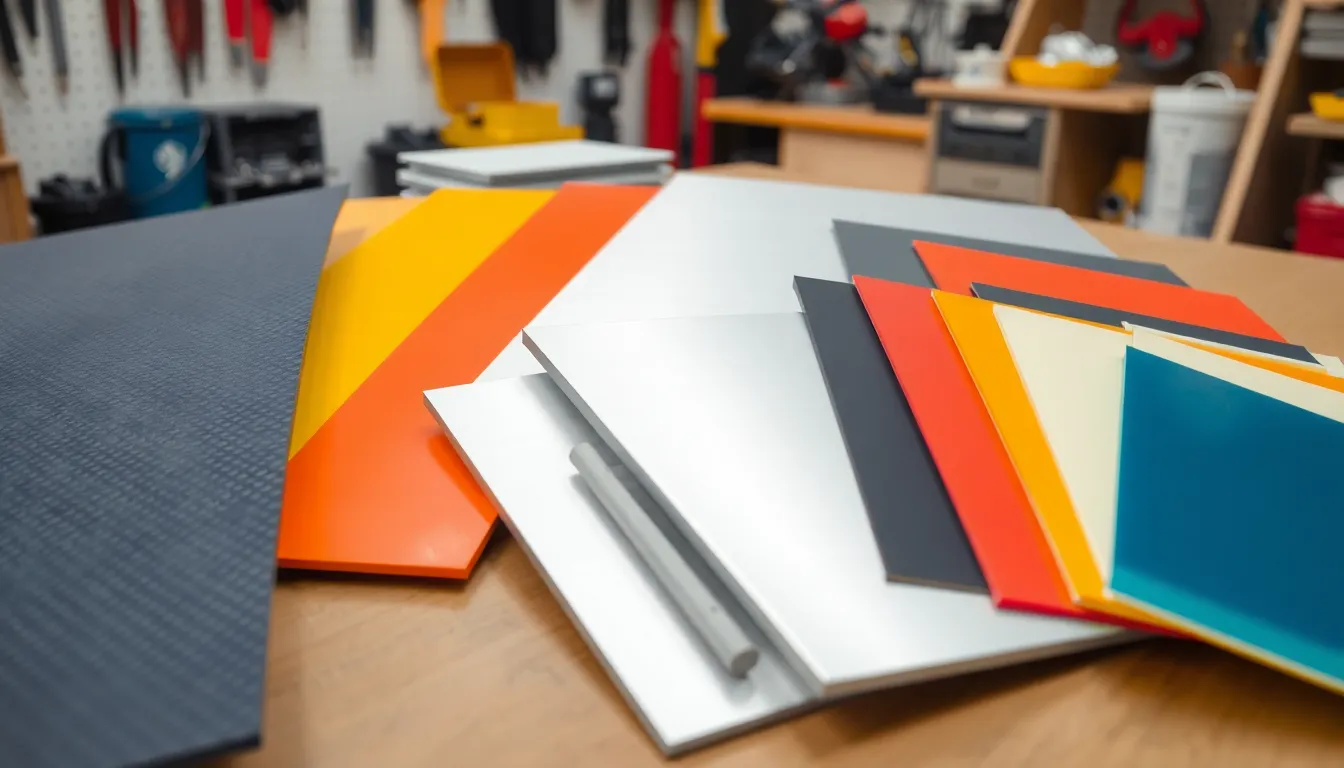When it comes to building the perfect drone, choosing the right airframe material can feel like picking the best avocado at the grocery store—one wrong choice and you’re in for a messy situation. The airframe isn’t just the skeleton of the drone; it’s the backbone that holds everything together while soaring through the skies. From lightweight plastics to sturdy carbon fiber, each material has its own quirks and benefits, making the decision a little more exciting than picking out a paint color.
Table of Contents
ToggleOverview of Drone Airframe Materials
Selecting the right airframe material significantly impacts a drone’s performance and durability. Various materials, including lightweight plastics, carbon fiber, and aluminum, offer distinct benefits for different drone applications.
Lightweight plastics, such as polystyrene or polypropylene, provide cost-effective solutions for smaller drones. These materials excel in reducing weight while maintaining structural integrity, which enhances flight efficiency.
Carbon fiber stands out due to its high strength-to-weight ratio. Drones with carbon fiber airframes are known for improved rigidity and resistance to environmental factors. This material’s durability makes it suitable for high-performance drone applications.
Aluminum is widely used for its excellent balance of lightweight properties and strength. It can withstand significant stress, making it a reliable choice for professional-grade drones that require robust construction.
Newer materials, like Kevlar and fiberglass, also present unique advantages. Kevlar’s impact resistance makes it ideal for drones operating in harsh environments. Fiberglass, while heavier than carbon fiber, offers exceptional flexibility and ease of repair, which can be advantageous for hobbyist drones.
Ultimately, choosing the right airframe material involves considering specific performance needs, weight constraints, and cost-effectiveness. Each material contributes uniquely to the overall performance and mission capability of the drone.
Types of Materials Used

Selecting the right airframe materials directly influences drone performance and durability. Different types offer unique strengths essential for various applications.
Composite Materials
Composite materials combine fibers and resins to create strong, lightweight structures. Carbon fiber stands out for its high strength-to-weight ratio, making it ideal for performance-focused drones. Kevlar provides excellent impact resistance, suitable for harsh environments where durability is crucial. Fiberglass, while heavier than carbon fiber, still offers decent flexibility and ease of repair, appealing to hobbyists. These composites effectively balance performance and weight, ensuring drones operate efficiently in diverse conditions.
Metal Alloys
Metal alloys like aluminum and magnesium contribute significant strength and durability to drone airframes. Aluminum provides a lightweight alternative, easily found in both commercial and professional-grade drones. Its corrosion resistance ensures longevity under various environmental conditions. Magnesium, while slightly heavier, offers superior strength, enhancing the airframe’s rigidity. Both options showcase a practical balance between strength and weight, making them solid choices for aerial applications.
Thermoplastics
Thermoplastics like polystyrene and polypropylene offer cost-effective solutions for smaller drones. These materials maintain structural integrity while reducing overall weight, enhancing flight efficiency. Their flexibility enables easy molding into intricate shapes, allowing for innovative designs. Thermoplastics also resist impact, providing some protection against rough landings. Budget-friendly and lightweight, they serve as excellent options for entry-level and hobbyist drones, ensuring accessibility without sacrificing performance.
Properties of Drone Airframe Materials
Understanding the properties of drone airframe materials is essential for optimal performance. Each material type offers unique advantages relevant to specific drone applications.
Weight and Strength
Lightweight is a critical factor in drone design. Materials like carbon fiber provide exceptional strength without adding excess weight. This quality enhances flight efficiency by improving power-to-weight ratios. Aluminum, known for its balance of lightweight properties and strength, supports greater payload capacities. Strength influences durability, making it crucial for maintaining structural integrity during operation. Comparing materials, composite materials often outperform metals in weight-to-strength ratios. This makes them favorites for high-performance drones requiring agility and speed.
Durability and Resistance
Durability impacts a drone’s lifespan and performance in challenging environments. Carbon fiber resists environmental damage and fatigue, ensuring longevity. Aluminum’s resistance to corrosion enhances its lifespan, making it suitable for various outdoor conditions. Thermoplastics, while less durable than composites or metals, offer flexibility that aids in absorbing impacts. Kevlar excels in impact resistance, protecting drone components from collisions. Understanding these durability aspects ensures that users select materials capable of withstanding their operational requirements, maximizing reliability throughout the drone’s lifecycle.
Advances in Drone Airframe Materials
Advancements in technology continually reshape the materials used in drone airframes. Innovative approaches enhance performance, reduce costs, and improve sustainability.
New Technologies
3D printing stands at the forefront of new technologies, enabling rapid prototyping and customization of drone airframe materials. This method supports complex designs that traditional manufacturing cannot achieve. Additionally, bio-based composites are gaining attention for their sustainability, utilizing renewable resources to create lightweight structures. Various manufacturers explore nanotechnology to create stronger yet lighter materials. This includes incorporating nanoparticles that enhance strength without adding significant weight. Furthermore, smart materials are on the rise, allowing airframes to adapt under different conditions, improving overall efficiency.
Future Trends
Material science evolves to meet the demands of next-generation drones. Enhanced durability remains a priority, leading to research on impact-resistant materials suitable for various environments. Widespread adoption of hybrid materials is likely to increase, combining the best attributes of metals and composites. This shift toward integration promises more robust airframes with lower weight. Sustainability plays a crucial role, pushing manufacturers to explore recycling options and reduce environmental footprints. Growth in modular designs may lead to easy upgrades or repairs, extending a drone’s lifecycle. Developing these trends ensures drone technology keeps pace with consumer and industry needs.
Selecting the right airframe material is vital for optimizing drone performance and durability. Each material offers distinct advantages that cater to various needs and applications. As technology progresses new materials and innovations continue to emerge enhancing the capabilities of drones.
Understanding the implications of weight strength and environmental resistance helps users make informed decisions. Future developments in smart materials and modular designs promise to further revolutionize the industry. By staying updated on these trends enthusiasts and professionals alike can ensure their drones maintain peak performance and longevity.










